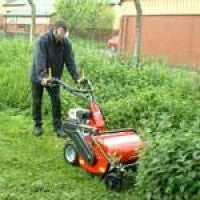Weed of the Week: Common Nettle (stinging) Urtica dioica L.
Weed of the Week: Common Nettle (stinging)Urtica dioica L.
By Laurence Gale
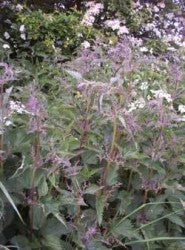
What is a weed? By definition a weed is a plant that is growing in the wrong place. Weeds take valuable space, water, sunlight and nutrients that may otherwise be accessible to important crops, in our case turf grasses. Weeds not only compete for these resources they can disfigure and cause problems to playing surfaces.
Weeds are very good competitors and take advantage of any opportunities to colonise turf situations, particularly when the sward is under stress and weak, leaving bare soil areas for weeds to populate. Weeds have many mechanisms and characteristics that enable them to do this, having thick waxy cuticle leaves that can be resistant to some chemicals, fast reproduction methods, the ability to reseed in 6 week cycles and deep tap roots enabling the weed to survive in compacted dry ground conditions.
Weeds have one of three life cycles: annual; biennial or perennial.
- Annual weeds: Live for a single season. These weeds germinate from seed in the spring or summer, flower and then die.
- Biennial weeds: Live for two seasons. During the first growing season, these weeds remain in a vegetative stage and, in the following year, produce flowers, set seed and die.
- Perennial weeds: Live for multiple seasons and flower more than once. Perennial structures (rhizomes, stolons, crowns, entire plants or roots) survive from year to year.
Some weeds may be harmful to the environment or noxious to your regional ecology. For example Japanese Knotweed (Fallopia Japonica) is fast becoming a major weed problem on road side verges and urban landscape areas, a very difficult weed to eradicate. It is very important to recognise weeds and seek effective controls methods to eradicate them from our facilities.
Weeds can also be used as an indicator of soil conditions. For example, knotweed and plantains both indicate soil compaction because they can maintain adequate root respiration at lower oxygen diffusion levels than other plants. Different weeds tolerate different soil conditions, some are alkaline loving and others acid loving. Getting to understand and recognise the physiology of these plants will help you become better turfgrass managers.
This week's weed is: Common (stinging) nettle Urticadioica L.
|
Scientific name
Family Life cycle |
Urtica dioica L.
Urticaceae Perennial |
|
| Form / Appearance | The common nettle is a leafy plant that is found in most temperate regions of the world. The plant grows erect on quadrangular stems. These are up to 120cm tall and are covered with long stinging hairs on the leaves and short bristly hairs on the stems. It grows 2 to 4 metres high and produces pointed leaves and white to yellowish flowers. Nettle has a well-known reputation for giving a savage sting when the skin touches the hairs and bristles on the leaves and stems. |
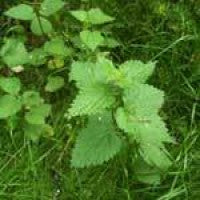
|
| Roots | Nettles have large yellow rhizomes that enable the plant to spread and reproduce itself quickly. | |
| Flowers | The flowers are arranged in drooping panicles, growing in groups from the upper leaf axils. The species name dioica means 'two houses' because the plant usually contains either male or female flowers. |

|
| Leaves | The leaves of the nettle are opposite, stalked, cordate or lanceolate with the leaves serrated at the margin and covered on both sides with stinging hairs. |
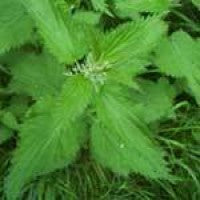
|
| Reproductive method | Nettles can reproduce themselves from seed and rhizomes that form underground stems that extend out and grow, producing new shoots, enabling the nettle plants to spread. | |
| Habitat |
Urtica dioica is a native British perennial growing in damp forests or where land has been disturbed by man.
Nettles can grow on most soil types and can tolerate drier soils. This plant can quickly establish itself on waste and unmanaged grounds. |
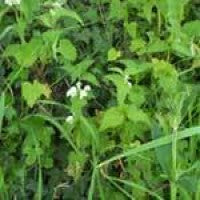
|
| Miscellaneous info |
The Latin root of Urtica is uro, meaning "I burn" indicative of the small stings caused by the little hairs on the leaves of this plant that burn when contact is made with the skin. Rubbing the sting with a dock leaf can relieve the pain because dock leaves contain an alkali that will neutralise the acid and therefore reduce the sting.
The root and leaves of nettle are used in herbal medicine. The leaves are collected from June to October during the flowering period, the roots in spring and autumn. From ancient Greece to the present, nettle has been documented for its traditional use in treating coughs, tuberculosis, and arthritis and in stimulating hair growth. Urtica is rich in iron and vitamin C. The plant is also useful to wildlife. Red Admiral butterflies lay their eggs on the undersides of leaves so the young will have a meal as soon as they hatch. Look for the holes chewed in the leaf by these voracious eaters! |

|
| Cultural Control | Nettles can be controlled by regular cutting back, preventing the plant from being able to photosynthesise, eventually weakening the plants until it dies. Otherwise, the only other effective cultural method is to remove the entire plant ensuring all roots and rhizomes are dug out and transported away from the site. |
|
| Chemical Control |
Apply Non-selective herbicides when plant growth is active. There are a number of products available for controlling broad leaf weeds.
These chemicals are best used when the weeds are actively growing, usually between April-October.
These herbicides are usually applied as a liquid using watering cans, knapsack sprayers and vehicle mounted sprayers. Ensure you follow manufacturer's directions, health & safety and product data sheets, and comply with COSHH regulations, when using these chemicals. Herbicides are an effective tool where high quality turf is desired. However, they must be applied with care and accuracy and in the context of a good overall turf management program. Before using any herbicide, carefully review the label for conditions of use including rates, methods of application, and precautions. Never use an herbicide in any manner contrary to its label and be sure that the herbicide will not injure the turfgrass species |

